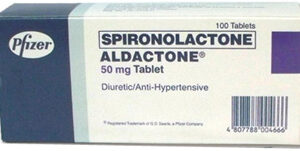Propranolol Overview
Propranolol is a non-selective beta-blocker primarily used to treat high blood pressure, angina, tremors, and conditions related to the heart and circulatory system. The drug’s chemical name is Propranolol hydrochloride, and it operates by diminishing the workload on the heart and helps it to beat more regularly.
Pharmacokinetics and Metabolism
Propranolol is well-absorbed after oral administration, although it undergoes significant first-pass metabolism in the liver. Its bioavailability ranges from 25% to 35%. Peak plasma concentrations occur about 1 to 2 hours after ingestion. It is highly lipophilic, allowing it to cross the blood-brain barrier. The drug is extensively metabolized by the liver, and its metabolites are excreted primarily in the urine. Propranolol’s plasma half-life ranges from 3 to 6 hours.
Dosage Forms and Strengths
Propranolol is available in multiple forms and strengths: Immediate-release tablets (10, 20, 40, 60, and 80 mg), Extended-release capsules (60, 80, 120, and 160 mg), and Oral solution (20mg/5mL, 40mg/5mL). Individual dosing will differ based on the condition being treated and patient response.
Indications and Usage
The primary uses of Propranolol include hypertension, angina pectoris, atrial fibrillation/flutter, myocardial infarction, hypertrophic subaortic stenosis, pheochromocytoma, and migraine prophylaxis. It is also used for off-label indications such as for the treatment of anxiety, akathisia, and essential tremor.
Dosing and Administration
Initial dosing and increments are dependent on the severity of the condition. A typical starting dose for hypertension may be 40 mg twice daily which can be adjusted according to the patient’s response, up to a usual maximum of 240 mg per day. For conditions like performance anxiety, a single dose of 40 mg may be taken 30-60 minutes before the event. Propranolol should be administered before meals and at bedtime. Extended-release capsules should not be crushed or chewed and should be taken whole.
Contraindications
Propranolol should not be used in individuals with known hypersensitivity to the drug, cardiogenic shock, sinus bradycardia, and greater than first-degree heart block, or in patients with severe peripheral arterial circulatory disorders.
Drug Interactions
Propranolol may interact with other medications such as CYP2D6 inhibitors (which can increase propranolol levels), clonidine (potential for severe hypertension upon withdrawal), antidiabetic drugs (may mask signs of hypoglycemia), and other antihypertensives (may have additive effects).
Adverse Reactions
The most common side effects include bradycardia, fatigue, dizziness, gastrointestinal disturbances, and sleep disturbances. Other adverse effects can include bronchospasm, cold extremities, and in rare cases, heart failure.
Special Populations
Pregnant women should only use Propranolol if the potential benefits justify the potential risk to the fetus. Propranolol is excreted in breast milk, and caution should be exercised when administered to a nursing woman. Pediatric use should also be approached with caution, adjusting doses carefully due to the variable pharmacokinetics in children.
Monitoring Parameters
Frequent blood pressure and heart rate monitoring are essential, particularly when initiating or adjusting dosages. Liver function tests should be monitored periodically, as propranolol is metabolized primarily by the liver. Patients with a history of heart failure should be monitored closely for signs of worsening heart function.
Overdosage and Management
In the event of overdosage, the patient should be hospitalized and provided with close monitoring, particularly of cardiovascular and respiratory function. Treatment of an overdose includes general supportive measures, and specific interventions may include intravenous fluids, atropine for bradycardia, glucagon, and vasopressors for hypotension, and dialysis or hemoperfusion in severe cases.
Patient Counseling Information
Advise patients to take Propranolol as directed, not to skip doses or abruptly discontinue the medication without consulting a healthcare provider. Patients should report signs of bradycardia, hypotension, or worsening symptoms of heart failure. Caution patients against interruption or cessation of therapy without the physician’s advice because it may worsen their condition.




Reviews
There are no reviews yet.